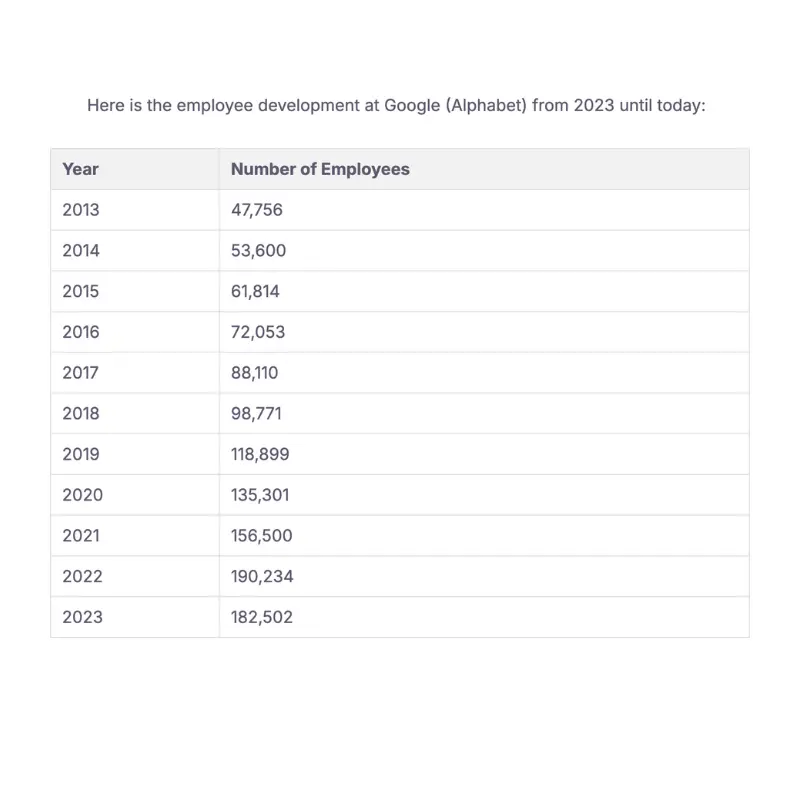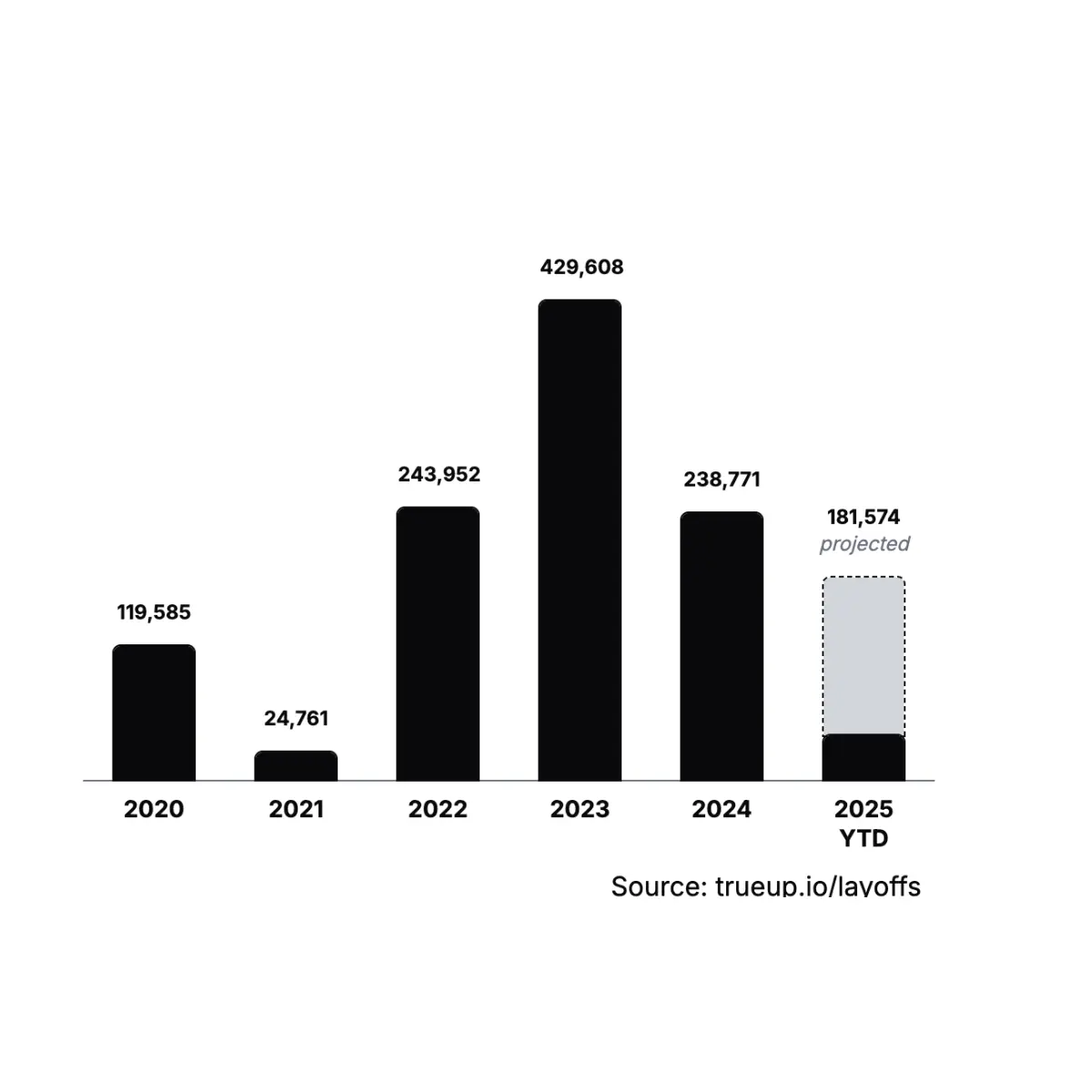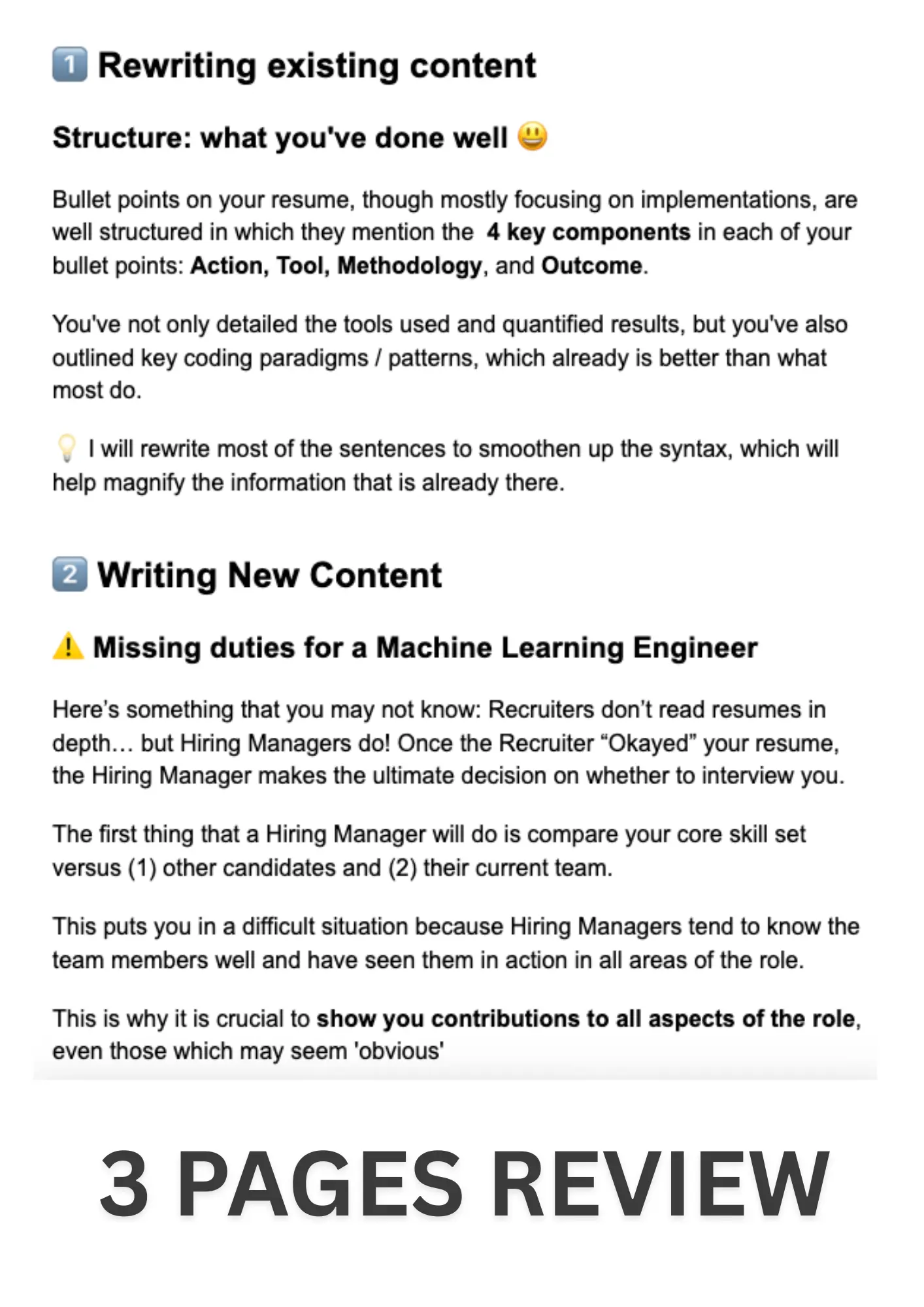How to write amazing Bullet Points
Learn about the Levels System: the framework I developed to write amazing bullet points. Follow this 5 steps checklist to rank your resume within the top 1%.
Posted on June 20, 2025
Last updated: July 9th, 2025 | 11 min read
Whether you're a junior dev or an experienced engineer, you've probably asked yourself, "Why is the job market so bad in 2025?" Resumes just aren't getting the responses they used to, and understanding what's changed is crucial to adapt your job search strategy.
Understanding the reasons why the Tech job market has changed is critical to adapt your job search strategy, so let me tell you how it all happened.
Our story starts with the greatest Tech hiring market in history.
For a decade, our industry grew at proportions rarely seen before.
By the early 2010s, people started to love smartphones, which meant apps, including social media platforms, grew substantially. (This was a time when smartphone apps still made money).
Consumer behavior had changed, and most people were now okay with buying things online, which caused an e-commerce boom.
All of this was facilitated by the rapid growth of cloud computing, which allowed businesses to build infrastructures to a scale never seen before.
If you wrote code, you had a good time.
Headcounts were growing much faster than one could complete computer science degrees, so the barrier to entry was low.
In the United States, tech jobs grew by 2.3 million from 2010 to 2019. That was 7.7% of the country's entire workforce. Source: Techrseries
It was the same in the European Union: tech positions grew by 50%, to 8.1 million in 2019. Source: FEPS
Unemployment in tech hit record lows toward the end of the decade.
By 2019, tech unemployment was so tight that by June 2019 it had fallen to ~1.3%. Historical. Source: Dice
If you wanted a job in Tech, you got it. Simple as.
This produced what Recruiters call a candidate-driven market. Jobs were plentiful, but candidates were scarce, so they have all the leverage.
That pushed salaries up. The average U.S. tech salaries topped $104,000 by 2019. Source: Dice
During that golden decade, you barely needed a resume. Jobs came your way in your LinkedIn inbox, with desperate Recruiters getting “creative” to fill open positions.
Yep, that’s what the Senior Devs you know lived.
After the initial shock and the “hiring freeze” that followed the first lockdowns, Tech companies saw profits increase suddenly.
It’s obvious: people were stuck at home so they turned to digital products for everything. It accelerated already existing trends like food delivery, e-commerce, or streaming.
Everything that was still offline moved online, including education, healthcare (rise of telemedicine), fitness (virtual workout classes). Heck, even grandma learned how to use Zoom!
The number one reaction was to hire aggressively. Recruiters like me were flooded with new positions to fill, so that businesses could maximize the short term revenue opportunity.
By 2021 companies were advertising 81% more tech job openings than in 2019. That’s nearly double within a single year! Source: Datapeople
Tech job postings in the U.S. climbed to 400,000 per month for the first time on record in 2021.
Because all companies hired extensively, the shortage of candidates got even worse. Candidates often received multiple offers, most of the time with bloated salaries. (Many competitive tech companies gave recruiters extra leeway to “win” candidates over).
FAANG didn’t want to miss out on talent and made sure they hired everyone they could.
It was not just out of immediate necessity: it sometimes felt like real FOMO. As a Recruiter, I heard Hiring Managers saying stuff like "we want them so that Amazon can't get them".
As an example, Google nearly doubled its headcount between 2018 and 2022!

Alphabet (Google)'s headcount growth. Source: Seo.AI blog
Same for Meta, which also (almost) doubled their headcount from 48,000 in March 2020 to 80,000 by September 2022. Source: Techtarget
Historical growth and unrealistic profit expectations, reckless investment and unnecessary hiring...
This, my friend, is a big fat bubble.
Bubbles always bust.
As Covid faded away, restrictions were lifted.
This started a huge domino effect.
People finally got out of their homes to explore the once-abandoned world, The Last Of Us style.
That meant fewer Zoom calls (sorry, grandma!) and less online retail therapy.
Online sales returned to normal. This wasn’t fun for companies, because it meant large and overpaid teams with no revenue to justify their existence.
Entire product lines had to be dropped, and businesses suddenly realized they had way too many mouths to feed.
But that was just the hangover.
Companies overextended themselves, but the overall economy took an
even harder hit.
Entire industries had to shut down during Covid.
Government had to pay both businesses and workers (stimulus checks) to keep the economic machine running.
Central banks did this by “printing money” (Quantitative Easing), which means there are more dollars (or whichever currency) in circulation.
As a result, each dollar holds less value than before. It's now just one of many more in a larger pool of money.
This in turn caused inflation, which spiked to 9.1% in June 2022 in the U.S. The highest in 40 years.
To combat inflation, central banks increased interest rates, which basically makes borrowing money more expensive. This slows down spending and investment, and helps reduce the demand for goods and services, and in turn, cools down prices.
In the short term, people are spending less and companies earn less.
But within a longer timeline, this means that investing is harder (and more expensive), so VCs don’t fund startups based on a half-assed pitch deck as they used to.
Suddenly, you couldn't raise money “pre-product”, and investors focused on startups that brought actual profit.
Many startups died, and existing companies reduced headcount to achieve profitability.
This is what led to extensive layoffs and the closing of headcounts. It started with Big Tech, and it was violent.
In November 2022, Meta abruptly laid off 11,000 employees. It was the largest cut in its history.
Amazon then announced 18,000 job cuts (Nov. 2022 – Jan. 2023), because they needed to trim the payroll. Source: Techtarget
It spread to the entire Tech industry, and in In 2022, tech companies worldwide cut 240,000 jobs.
2023 was even worse and topped at an impressive 400,000 layoffs.

Tech Layoffs 2020-2025 Source: Trueup
Redundancies have slowed down since, but they're still going strong.
Obviously, when companies fire employees, they hire less. As a result, 2023 saw the first decline in total U.S. job openings and hires since 2009. Source: US Bureau of Labor Statistics
Because there is very little hiring going on, the number of job seekers keeps growing and the situation gets increasingly worse. Your competition keeps getting bigger and tougher, while the number of opportunities keeps shrinking.
Side note: if you want to keep track of layoffs across the industry, check out Layoffs.fyi
Layoffs, hiring freezes and increased competition are the main factor explaining why the job market is so bad in 2025. But sadly, there's more...
We have to talk about AI too.
Though it will probably not replace engineers, AI makes currently employed devs more productive.
The AI boom came at the time when companies needed it the most.
This effectively solves the biggest problem of lack of profitability: companies can cut down headcounts and still maintain a high level of output with a smaller team.
And it didn't take long for management teams to get ideas. By 2023, some firms explicitly cited AI as a reason for slowing hiring.
For example, IBM’s CEO announced the freezing of 7,800 back-office headcounts, saying these roles “could be replaced by AI” in coming years.
Just recently, the CEO of Salesforce.com claimed that the company won't be hiring engineers this year (2025) because of AI. Source: The San Francisco Standard
Whether we like it or not, AI is shrinking the need for traditional engineers, becoming an additional reason why the job market is so bad in 2025 for Devs.
But it's slightly more nuanced: though the number of open roles is definitely going down, some of the jobs are only being "moved".
Because of AI, needs are changing and employers are now seeking expertise in Data Science, Machine Learning, Data Analytics, Data Engineering, and Automation.
In this new era, Data has become the most important asset.
Therefore any job involved with collecting it, processing it,
analysing it or building with it is valuable to an employer.
Where other roles are negatively impacted because AI makes their workflow easier (Software Development, QA, etc...), "data-heavy" positions are getting traction.
As it did many times before, the Tech industry is changing shape. Computer Science as a discipline will most likely stay useful, but the engineering workflow is evolving.
We're going to write less code manually, but that will leave more time for the actual design and engineering. We'll be able to build larger, more complex, more intelligent products.
My personal opinion on the subject of AI and programming is that it's going to help the position "mature". Think about it: Engineers who design car engines don't build the parts by hand. They focus on engineering, and they use software and hardware tools to do the heavy lifting.
To plan a successful career in 2025, you need to focus on Computer Science knowledge rather than the syntax of a specific programming language.
When all is said and done, you still need to get your foot in the door, and as we discussed, it's gotten harder.
Resume screening has the highest rejection rate within the hiring process. Recruiters make that critical initial "yes" or "no" decision within seconds, based solely on one data point: your resume.
Where a resume used to be a formality in the "Good Old Days" or the "Bubble Era", it's now a make or break factor.
The clients of my resume writing service have realized this too.
I’ve noticed that:
I have more clients than before, who are in need of an edge (and who never would have needed my services 3-4 years ago).
In the past, many of my clients were looking for strategic changes/step-ups. Now most are struggling to find any relevant SWE job.
It takes much better resumes to make a difference. Candidates are getting better at writing their own resumes; many now use resume writers, and the overall bar has risen. The key takeaway here is to understand to do whatever it takes to improve your chances and to know that it will take time.
I'll assess your resume personally.
and write a 3 pages review.
You'll get:
1️⃣ Detailed recommendations on how to improve your CV.
2️⃣ Insider secrets on how your resume is reviewed.
3️⃣ Examples of rewriting for inspiration.
